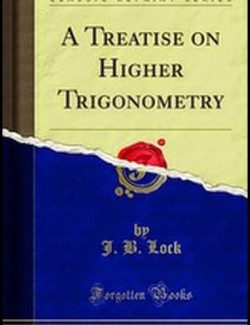Description
This best selling author team explains concepts simply and clearly, without glossing over difficult points. Problem solving and mathematical modeling are introduced early and reinforced throughout, providing students with a solid foundation in the principles of mathematical thinking.
Comprehensive and evenly paced, the book provides complete coverage of the function concept, and integrates a significant amount of graphing calculator material to help students develop insight into mathematical ideas. The authors’ attention to detail and clarity, the same as found in James Stewart’s market-leading Calculus text, is what makes this text the market leader.
View more













Leave us a comment
No Comments